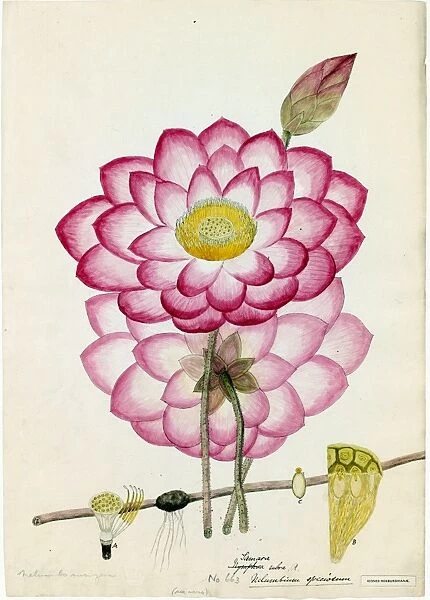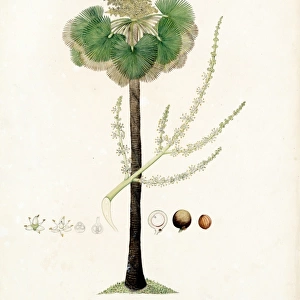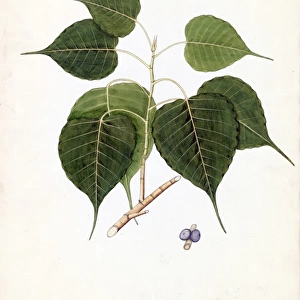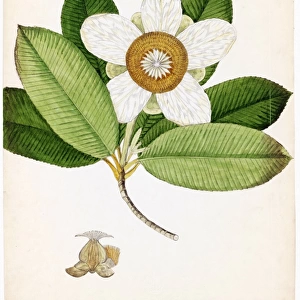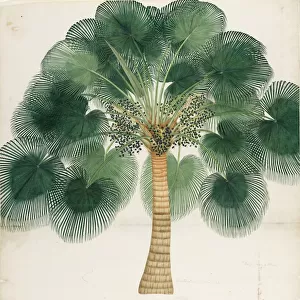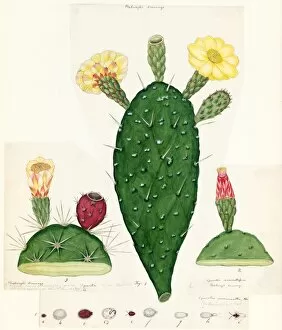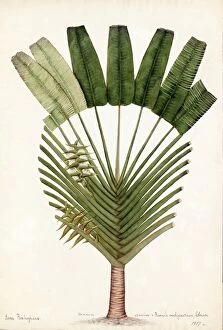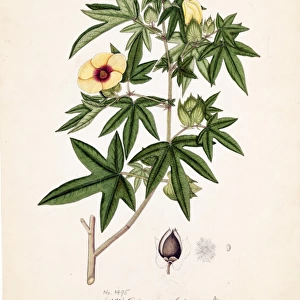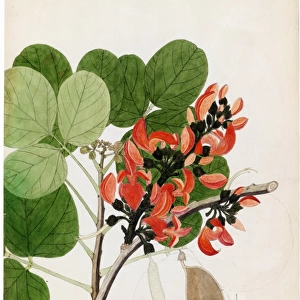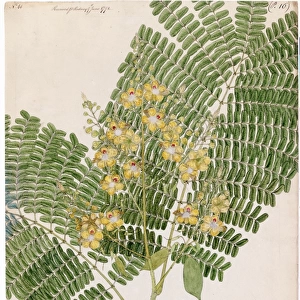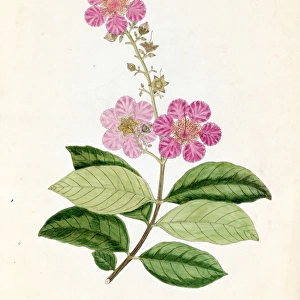Rights Managed > Botanical Art
Nelumbium speciosum, Willd. (Lotus)
Purchase This Item For Download
world rights, single editions, non exclusive use
Filename: ROX00000055.jpg
Size: 3656 x 5104 (6.7MB)
Date: 3rd December 2007
Credit: © The Board of Trustees of the Royal Botanic Gardens, Kew
© The Board of Trustees of the Royal Botanic Gardens, Kew
![]()
Wall Art and Photo Gifts from Kew Images
Nelumbium speciosum, Willd. (Lotus)
Watercolour on paper, no date (late 18th early 19th century). Hand painted copy of an illustration commissioned by William Roxburgh. In his Flora Indica, Roxburgh tells of his familiarity with two sorts of this plant from the coast of Coromandel, one with rose-coloured flowers, the other with white ones, and with a third variety brought from China, with smaller rosy flowers. He describes how they grow in such sweet water lakes and how, on the coast they flower all year. In Bengal they flower during the hot season, April, May and June. Roxburgh writes also about the radical joints which, in old plant, are swelled into tubulosities of various size, ...from them issue many fungous fibres, and from the upper part and the interior part of these tubulosities issue one, two, or more leaves and flowers.... Roxburgh then reports that the tender shoots of the roots are eaten by the natives, boiled or in their curries. The seeds are eaten raw, roasted and boiled. The natives also use the leaves as plates from where to eat. This beautiful plant, known with their Sanscrit name Padma, is considered holy and often used in religious ceremonies. The specimen here figured is the pink variety
Media ID 654412
© The Board of Trustees of the Royal Botanic Gardens, Kew
19th Century Botanical Art East India Company India Nymphaeaceae Pink Water William Roxburgh Collection
FEATURES IN THESE COLLECTIONS
> Botanical Art
> William Roxburgh
MADE IN THE USA
Safe Shipping with 30 Day Money Back Guarantee
FREE PERSONALISATION*
We are proud to offer a range of customisation features including Personalised Captions, Color Filters and Picture Zoom Tools
SECURE PAYMENTS
We happily accept a wide range of payment options so you can pay for the things you need in the way that is most convenient for you
* Options may vary by product and licensing agreement. Zoomed Pictures can be adjusted in the Cart.

